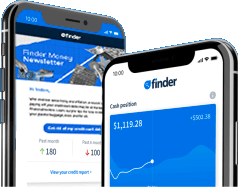We still don’t know the full effect the pandemic and resulting economic slowdown will have on the housing market. That said, understanding where 2019 and 2020 mortgage statistics fit into the landscape can help you make sound financial decisions in the coming year.
Homebuying highlights
In 2019, US mortgage lenders reportedly originated $2.66 trillion dollars in home loans with an average interest rate of 4.561%. The average loan size was $285,284 and borrowers paid $4,817 on average for their closing costs.
If you look at the average loan amount by application status, the figures shift slightly. The average size of originated loans was $277,853. The average loan size drops slightly for loans that were approved but not accepted to $261,443, and drops more significantly for denied loans, which averaged $208,794.
Mortgage rate statistics
Overall, interest rates have been on a steady decline since 2006. Lowered rates helped victims of predatory loans refinance so they could keep their homes and allowed new home buyers to enter the market under fair terms.
As the economy recovered, interest rates rose slowly to boost the stock market, dropping again in 2016. But the Federal Reserve chair raised interest rates significantly in 2017 to signal confidence in the growth of the US economy, which in turn boosted the stock market.
Still, after years of presidential policy focused almost solely on amping the stock market with higher rates, the global pandemic and a newly battered economy called for change. And in 2020, nationwide mortgage rates dropped to their lowest point in 15 years. The average fixed rate for a 15-year loan was 2.68%, but that jumped to 3.2% for a 30-year loan. And the average rate for a 5/1-year adjustable-rate mortgage was 3.12%.
Average interest rates were fairly similar across loan types in 2019, with VA loans reporting the lowest rate at 4.114%. USDA loans come in second at 4.288% and FHA loans in third at 4.364%. The highest average rates were paid by borrowers taking out Conventional loans: 4.515%.
| Loan product type | Average interest rate |
|---|---|
VA | 4.114 |
USDA | 4.288 |
FHA | 4.364 |
Conventional | 4.515 |
Where are mortgage rates trending?
While we can’t know for sure where rates will go in 2021, in September of 2020, Federal Reserve officials indicated the short-term interest rate would stay near zero until 2023, which could mean years of lower mortgage rates. But a couple of factors could affect this prediction.
If the incoming Biden administration makes good on its promise to fight the pandemic and bolster the economy, rates may creep up again. Also, loans that use the London Inter-Bank Offered Rate (LIBOR) index to set rates could be affected by LIBOR’s dissolution in 2021. This could affect adjustable-rate mortgages (ARMs), reverse mortgages and home equity lines of credit.
Borrower preferences
In 2019, home purchases dominated the market with over a trillion dollars lent. But mortgage refinances were also popular, with cash-out refinance and rate-and-term refinancing totaling more than $942 billion. Reverse mortgages were among the least popular, but lenders still originated almost 35,000 reverse mortgages for a combined total of more than $7.7 billion.
Home loans by loan purpose
| Loan Purpose | Number of loans | Average loan amount | Total loan amount |
|---|---|---|---|
Home purchase | 4,022,050 | $277,853 | $1,117,538,270,000 |
Refinancing | 1,827,124 | $324,572 | $593,034,020,000 |
Cash-out refinancing | 1,285,858 | $271,710 | $349,380,300,000 |
Other purpose | 138,183 | $172,756 | $23,871,955,000 |
Home improvement | 137,361 | $105,292 | $14,462,955,000 |
Not applicable | 4,332 | $324,979 | $1,407,810,000 |
A 30-year mortgage loan is by far the most common loan term with over 3.6 million loans originated in 2019. The 15-year loan term comes second with 165,130 loans originated and 48,318 20-year mortgages, making that term come in third. But fourth place is surprising, with over 32,000 23-year term loans — a term that isn’t often offered by lenders.
Number of loans, average loan amount, and total loan amount by loan term
| Loan term | Number of loans | Average loan amount | Total loan amount |
|---|---|---|---|
5 years | 5,951 | $33,987 | $202,255,000.00 |
10 years | 31,602 | $57,230 | $1,808,580,000.00 |
15 years | 165,130 | $217,235 | $35,871,940,000.00 |
20 years | 48,318 | $176,549 | $8,530,510,000.00 |
23 years | 32,413 | $78,234 | $2,535,785,000.00 |
25 years | 6,090 | $198,105 | $1,206,460,000.00 |
30 years | 3,673,310 | $285,848 | $1,050,006,510,000.00 |
Homes purchased as primary residences were the most common in 2019 with over $1 billion in loans originated. This isn’t surprising, as many lenders and loan programs offer the best interest rates and lower down payments to borrowers financing a primary residence. But homeowners still purchased almost 175,000 second homes and invested over $21 billion in investment properties.
Occupancy type
| Occupancy type | Number of loans | Average loan amount | Total loan amount |
|---|---|---|---|
Principal residence | 3,847,214 | $275,701 | $1,060,679,200,000 |
Second residence | 174,836 | $325,214 | $56,859,070,000 |
Investment residence | 100,399 | $215,346 | $21,620,495,000 |
Mortgage lender statistics
The top three mortgage lenders of 2019 by volume were United Shore Financial Services, Quicken Loans and Wells Fargo Bank. But while United Shore originated more loans, with 158,826 mortgages, Wells Fargo actually financed almost $10 billion more in actual loan value, though it only originated 123,956 mortgage loans.
% Lender | % Number of loans originated in 2019 | % Total loan value in 2019 |
|---|---|---|
United Shore Financial Services | 158,826 | $47,850,560,000 |
Quicken Loans | 139,626 | $37,129,480,000 |
Wells Fargo Bank | 123,956 | $56,615,740,000 |
Fairway Independent Mortgage Corporation | 107,014 | $25,506,670,000 |
Caliber Home Loans | 75,596 | $21,890,880,000 |
JPMorgan Chase Bank | 71,092 | $28,331,980,000 |
Bank of America | 66,805 | $32,470,875,000 |
loanDepot.com | 54,623 | $17,138,975,000 |
Navy Federal Credit Union | 47,796 | $13,671,540,000 |
U.S. Bank | 41,855 | $15,595,325,000 |
Flagstar Bank | 39,558 | $10,760,100,000 |
Citizens Bank | 27,003 | $8,491,015,000 |
Freedom Mortgage Corporation | 25,132 | $6,544,360,000 |
PNC Bank | 16,788 | $5,407,020,000 |
Truist Bank | 16,042 | $4,728,680,000 |
SunTrust Banks | 14,152 | $5,536,680,000 |
Nationstar Mortgage | 12,806 | $2,959,320,000 |
PennyMac Loan Services | 9,342 | $2,644,220,000 |
Lakeview Loan Servicing | 1,673 | $392,905,000 |
AmeriHome Mortgage Company | 636 | $182,060,000 |
When is the best time to apply for a mortgage?
The best time to apply for a mortgage differs for every buyer as every buyer is in a different financial position. While market rates and seasonality can play some factors your credit score, employment history and other personal factors will be crucial as well. If you are curious as to whether you’ll qualify for a home loan and what type of interest rate you will get you can try our monthly mortgage calculator below.
Monthly mortgage payment calculator
See how much you'll pay for your home|
Your loan
|
|---|
| Loan amount |
|
$
|
| Loan terms (in years) |
|
|
| Interest rate |
|
%
|
Fill out the form and click on “Calculate” to see your estimated monthly payment.
or
Compare with LendingTreeon LendingTree's secure siteBased on your loan terms
| Principal | $ |
|---|---|
| Interest | $ |
| Total Cost | $ |
Methodology
Most data was sourced from the Dynamic National Loan-Level Dataset by the Home Mortgage Disclosure Act (HMDA), accessed on October 20, 2020.
“Originated loans” refers to loans in the HMDA data set where action_taken = 1 – Loan originated. “Home loans” looks at originated loans where the loan purpose is home purchase and that are not an open-end line of credit, not primarily for a business or commercial purpose, and where the occupancy type is either a principal or second residence.

For all media inquiries, please contact:
Richard Laycock, Insights editor and senior content marketing manager
Ask a question

